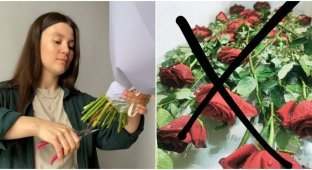Where do the millions of flowers from Indian festivals go (12 photos)
Have you seen how colorfully temples, statues, cows are decorated with flowers for any holiday in India? Indeed, 2 million colors of flowers are grown every year in India for these purposes. Do you know that no one will buy 40% of them? They will go straight to landfill. 
The altar of almost any temple is always decorated with fresh flowers.
Cows and rivers will endure everything
Well, it’s like going to a landfill - they’ll throw them into the nearest river. So flowers floating down a river in India are not always a sign of a festival upstream. Most likely, some temple got rid of garbage in the evening after lunch prayers. 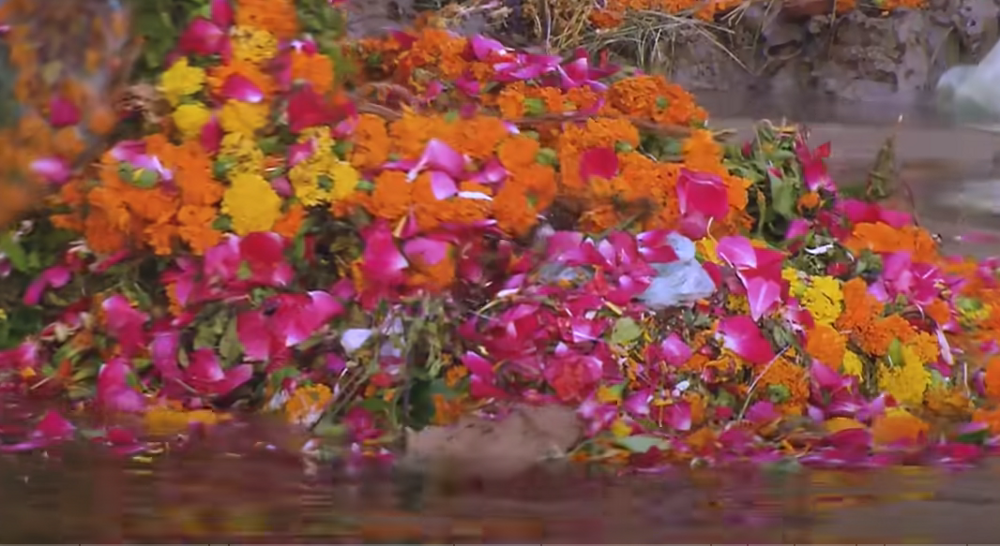
Into the river! 
And the statue from the festival there too!
Monks in temples believe that it is blasphemous to throw offering flowers into a regular trash can. They will try to feed some of them to cows and goats, but the animal is not capable of eating so much!
By the way, roses are most often given away from mosques, about 100 kilograms per week. While a large Hindu temple can create so much garbage in one day! 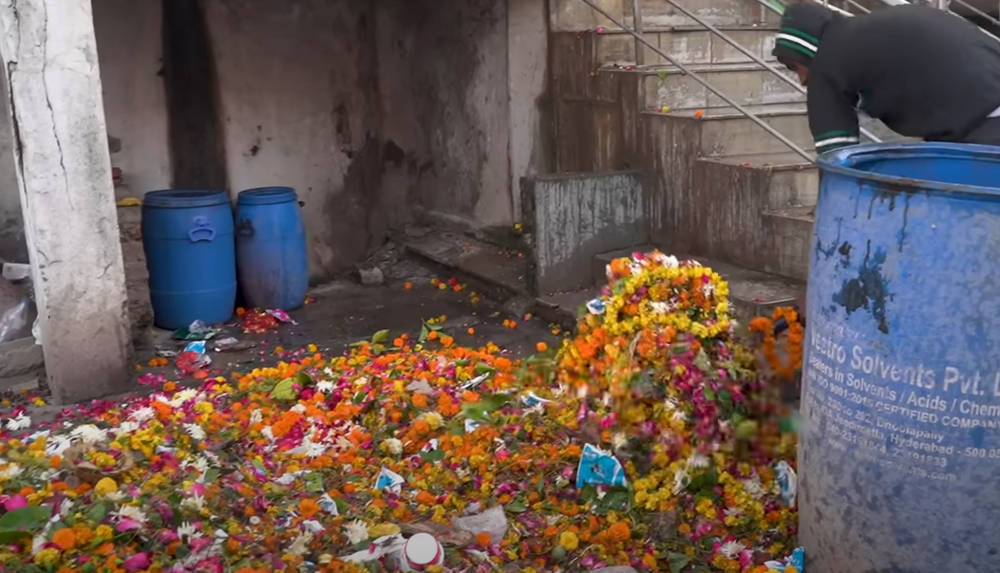
What does the backyard of any temple look like?
What is left after feeding is thrown into the river. They are guided by the fact that flowers are a product of nature and will not harm the waters.
But still there are pesticides on their petals, which slowly settle into the water. And the worst thing is that the flowers cover the surface of the water, like ice in our winter. 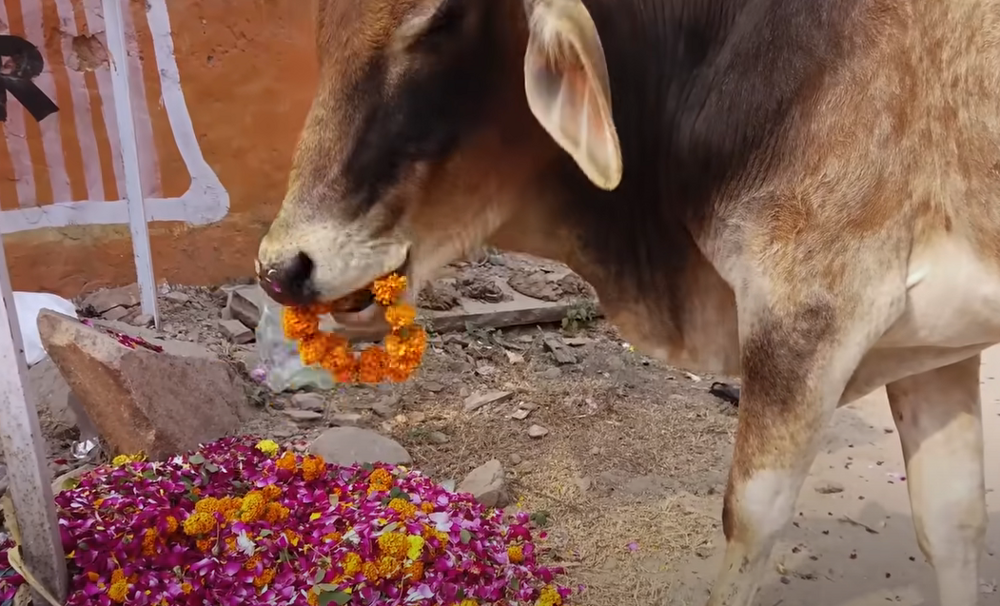
The temple cow will never be hungry, although the treatment of flowers with pesticides...
The fish begin to lack oxygen and die. Even make holes in the flowers to save the animals.
A healthy way out of the situation
Some of the discarded flowers can be recycled, but these are just nascent mini-businesses.
For example, use flowers as dyes for fabrics. 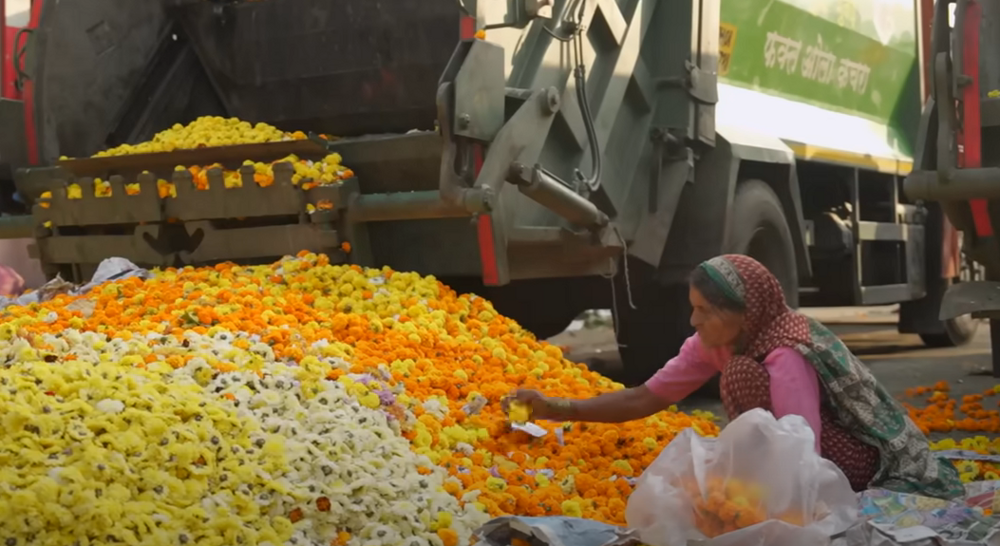
These are dye shop workers grazing on a garbage heap behind the flower market.
Some entrepreneurs order flowers to be collected from trash cans near churches and then sorted into different bags by color.
The monks allow you to take flowers for free. But flower buyers for factories themselves pay for such work. 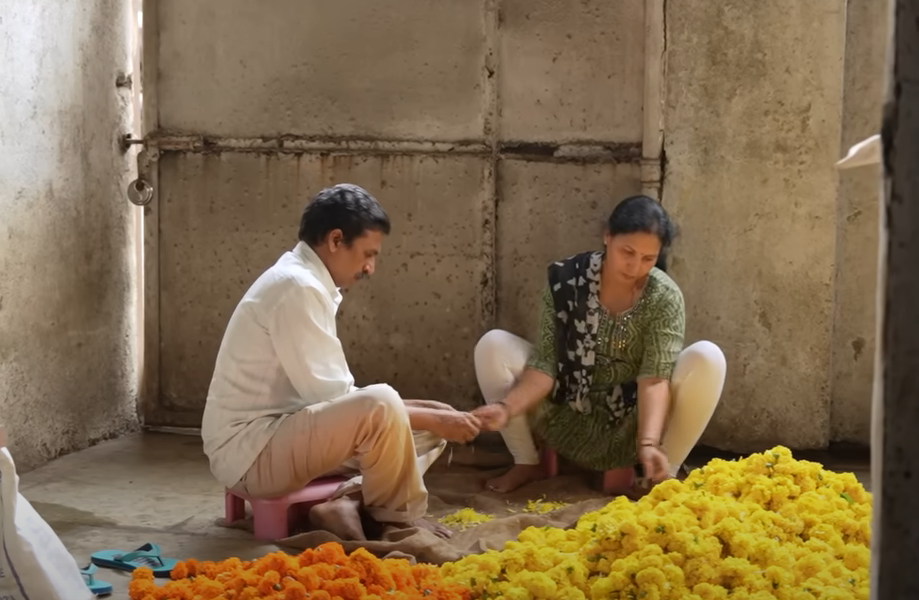
Sorting flowers into parts at the factory
Moreover, it is often more expensive than buying the same bag of flowers. It’s just that they also save rivers from pollution. But such generosity can be afforded by literally only a few who were able to set up the production of floral clothing for abroad, where the price tag is higher. 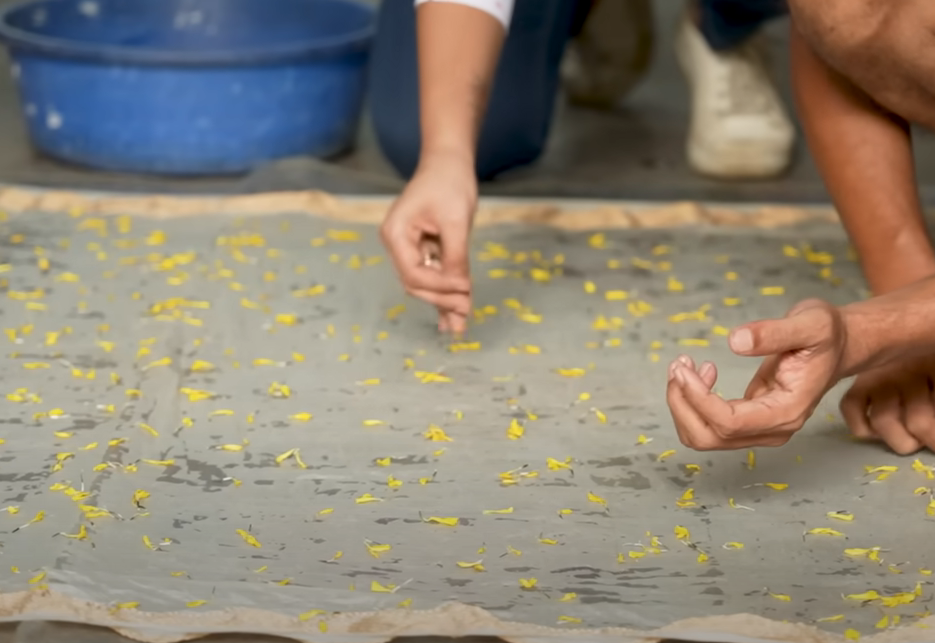
The petals are printed when evaporated and dried
In addition, foreigners and some locals really like the fact that clothes are made from flowers that actually received blessings in temple prayer.
In factories, the petals are manually separated and then left to dry on racks for a couple of days. Then the fabrics are soaked in a special composition, and colored dried petals are laid out on a warm, damp cloth. 
These are the final prints:
This is called eco-print. In order for everything to print well, the fabric must be tightly wrapped together with the petals and placed in a steaming machine. After a few hours, the fabric is rinsed and hung out to dry. Fancy natural imprints remain on it.
The second popular processed item is Indian incense. The flowers collected around the temples are dried and ground into flour, then the dough is kneaded onto them, which is then stuck on the well-known incense sticks. 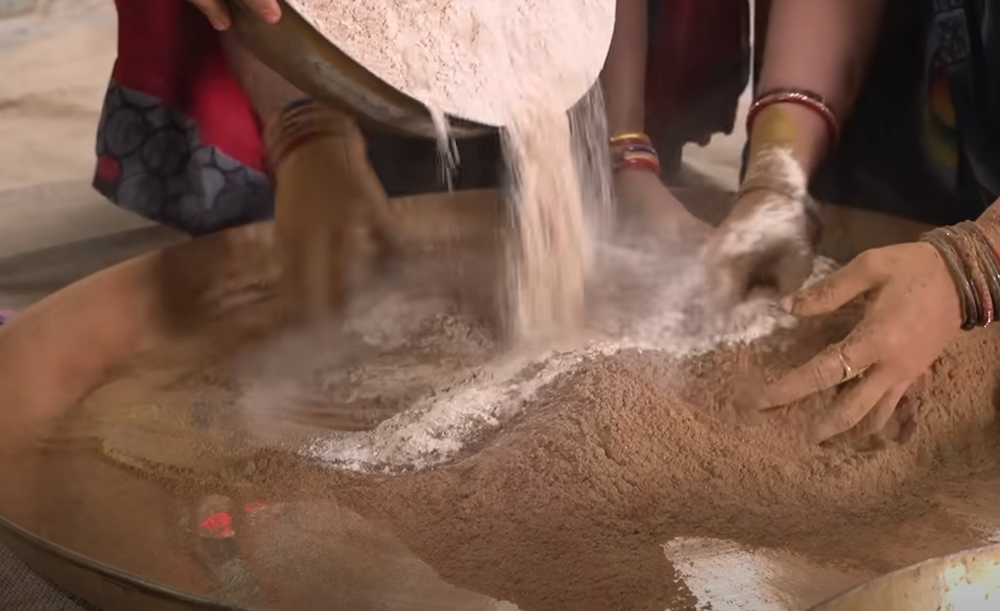
This is the powder made from dried flowers
Temples are more willing to donate flowers for such needs, because incense will then be lit in front of the statues of deities. That is, what has already been given to the gods returns to them in a new form again and again.
By the way, did you know that flowers at holidays are not different solely for the sake of the feeling of beauty? But because for every god there is a purchasehave their own flowers. Red hibiscus for Ganesha, lotus for Lakshmi, basil for Vishnu. 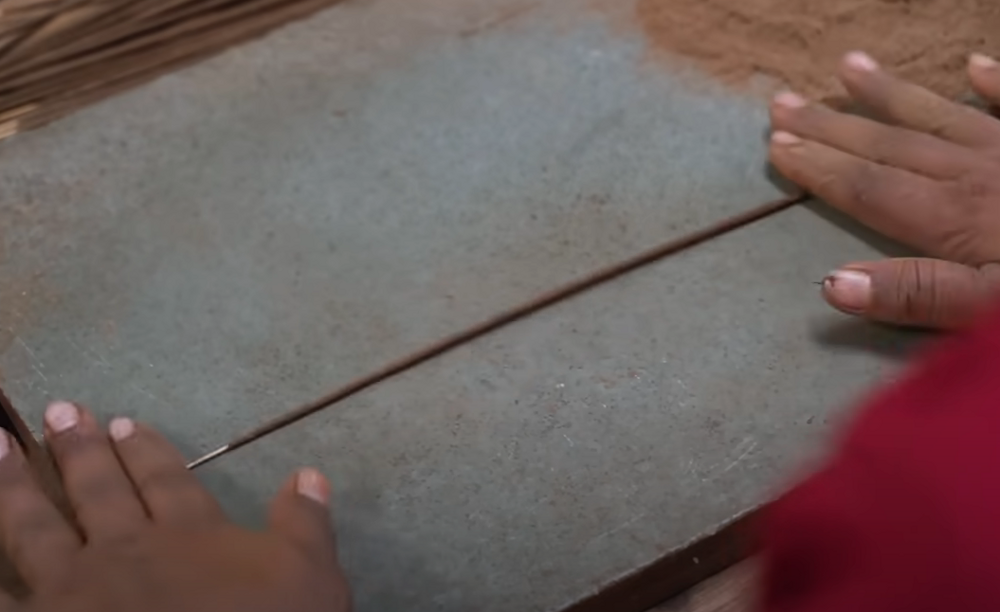
Did you know that the sticks are rolled by hand by factory workers?
And still, this is not even a third of all the flowers thrown away, because such production is not available everywhere where there are large churches. But the idea of not reducing consumption, but finding methods for processing flowers, really appeals to me. 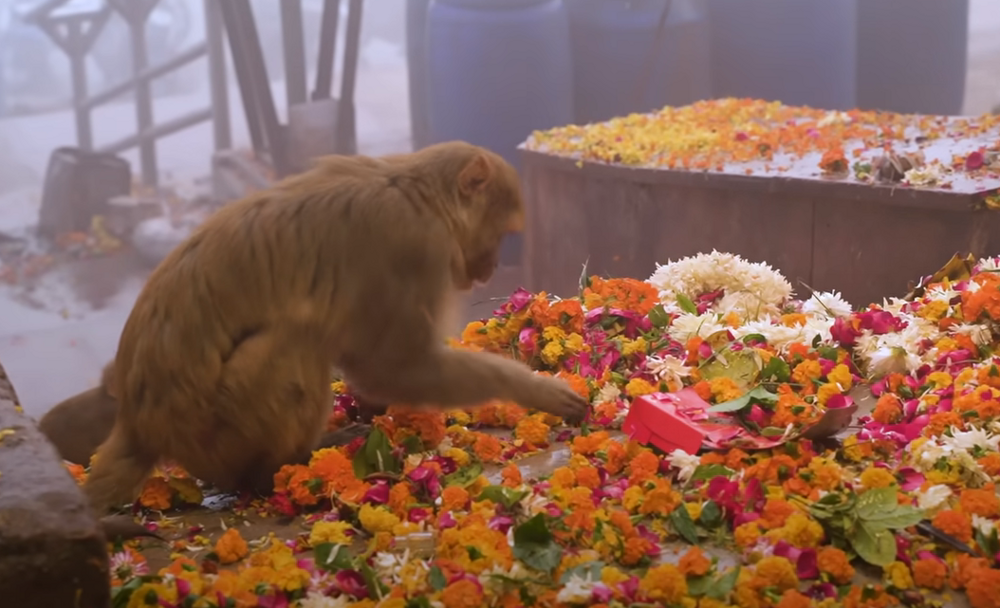
The monkey is used to living BEAUTIFULLY

















